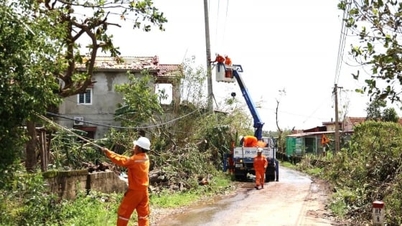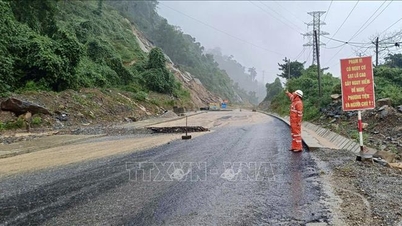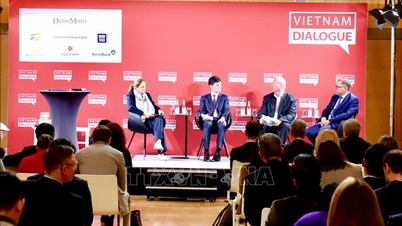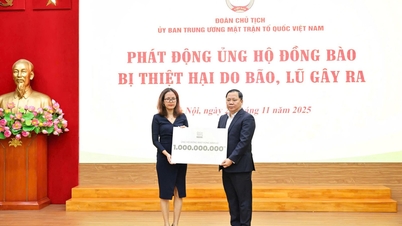
Adjusting electricity prices in a fair, reasonable and socially responsible manner is considered necessary, especially during the period when the electricity system is strongly shifting to clean energy and a competitive electricity market.
During the COVID-19 pandemic, the government has maintained a policy of stabilizing electricity prices to support people and businesses to overcome difficulties, despite sharp increases in global fuel costs due to geopolitical instability. Vietnam Electricity (EVN) alone has incurred a cost of nearly VND45,000 billion arising from fluctuations in energy prices, which is not included in electricity prices to avoid creating additional pressure on the economy.
According to Dr. Nguyen Si Dung, former Deputy Head of the National Assembly Office, this expenditure does not reflect weaknesses in governance but demonstrates the role of state-owned enterprises in macroeconomic stability and ensuring social security during the crisis.
Mr. Dung emphasized that the principle of "correctly and fully calculating" costs is a prerequisite to maintain the sustainability of the electricity system, and at the same time requires that all costs included in electricity prices must be valid, independently audited and publicly disclosed.
International experience also shows that adjusting electricity prices according to actual costs is a common practice. Thailand adjusts the fuel surcharge Ft (fuel cost adjustment amount added/subtracted from electricity prices according to actual fluctuations) every four months; South Korea adjusts quarterly; and many European countries apply direct support mechanisms for vulnerable households when energy prices increase.
For Vietnam, the principles of transparency and full cost calculation during the recent pandemic period have created a basis for the National Assembly and the Government to develop a roadmap to change the electricity price mechanism towards a more market-oriented direction, reduce cross-subsidy and encourage investment in the grid, renewable energy and new power sources.
From 2026, a two-component electricity price mechanism will be applied, including capacity price and electricity price. This is a model that has been used by many countries to accurately reflect the cost of infrastructure investment and power system operation. In the context of electricity consumption demand forecast to increase by 7.5 - 8% in 2026, higher than GDP growth of about 6.1%, the conversion of the price mechanism is expected to help optimize operations and reduce peak capacity investment pressure.
Dr. Nguyen Huy Hoach, an expert from the Scientific Council of Vietnam Energy Magazine, analyzed that the two-component electricity price mechanism is consistent with the development trend of the competitive electricity market.
The capacity price is applied according to the maximum capacity of the customer in the month, while the electricity price reflects the actual consumption output. According to Mr. Hoach, separating the two costs helps to make the electricity price transparent, limiting the situation where customers with fluctuating load still pay the same price as customers with stable usage. This model has been applied in Japan, Germany, the United States, China, Thailand, Indonesia, etc. and is an inevitable trend in the context of the increasing proportion of renewable energy.
Impact analysis shows that each customer group will be affected differently. For residential households, due to the low load characteristics and strong fluctuations over the course of the day, costs may increase slightly if many high-power devices are used in the evening. In contrast, households with stable electricity usage will not be affected much.
For industrial manufacturing enterprises - the most stable load group, simulation shows that enterprises consuming 200,000 kWh/month and maximum capacity of 500 kW can reduce costs by 4.55%, equivalent to 20 million VND/month compared to current electricity prices.
Commercial and service units with fluctuating loads may incur higher costs in terms of capacity prices, but this is also the group that has the ability to flexibly adjust loads to reduce costs in the long term.
On the power system side, applying two-component pricing helps EVN stabilize revenue, reduce the risk of output fluctuations and accurately reflect the cost of maintaining reserve capacity to meet peak demand.
According to the preliminary assessment of the Institute of Energy, if this pricing mechanism is widely deployed for industrial and commercial customers, the system can reduce 4,000 - 5,000 MW of maximum capacity, equivalent to reducing the need to invest tens of thousands of billions of VND in power sources and grids.
The pilot phase from October 2025 will be carried out by EVN with a group of production customers consuming an average of 200,000 kWh/month. The goal is to verify the feasibility and complete the metering system, load database, billing software as well as communication with customers. The biggest challenge is to avoid misunderstandings when the "capacity price" component appears on the bill, which is still quite new to most electricity users.
For this model to be put into practice effectively, experts emphasize three requirements: smart metering infrastructure; transparent legal framework for electricity purchase contracts and full disclosure of pilot results to create trust among users.
In the long term, a two-component electricity price will encourage focused energy savings, especially peak load reduction - a factor that accounts for the majority of electricity system infrastructure investment costs.
In the context of Vietnam moving towards a competitive electricity market, expanding types of power sources and increasing the proportion of clean energy, a transparent electricity price mechanism that accurately reflects costs and ensures fairness for all customer groups will become an important driving force to attract investment, ensure energy security and sustainable development of the national power system.
Source: https://baotintuc.vn/kinh-te/gia-dien-minh-bach-bao-dam-cong-bang-thuc-day-thi-truong-dien-canh-tranh-20251120182747774.htm
















































































































Comment (0)